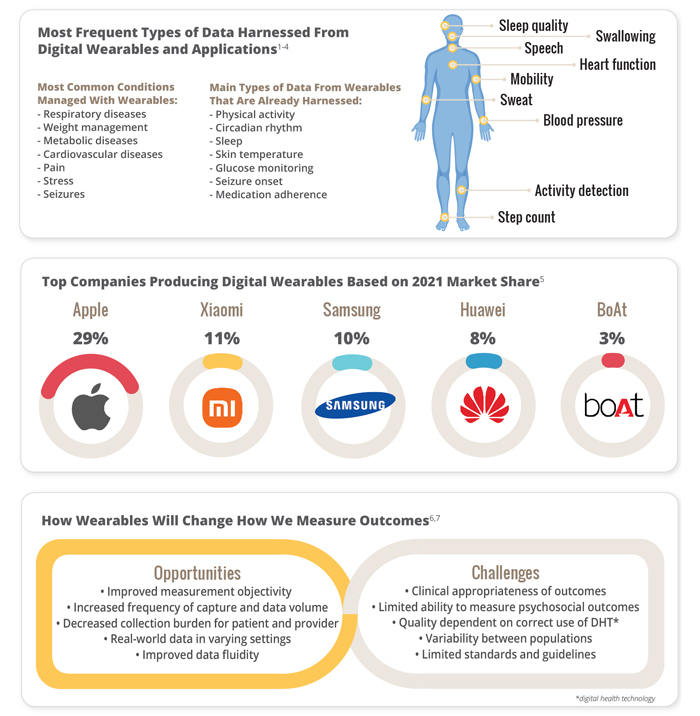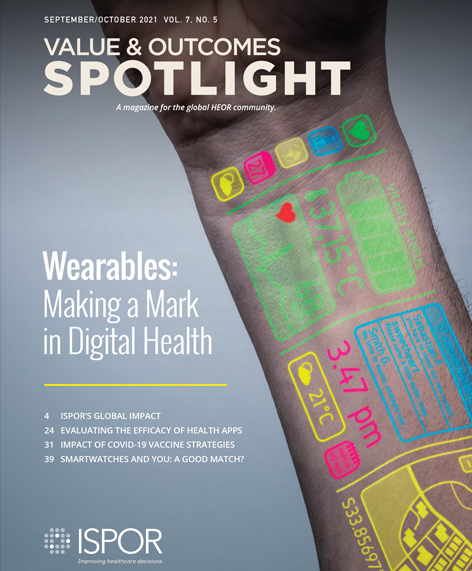By the Numbers: Digital Health/Wearables
Contributors: Ingrid A Cox, Ambrish Singh, University of Tasmania, Hobart, Australia; Vasco Miguel Pontinha, Tyler Wagner, Virginia Commonwealth University, Richmond, VA, USA; Felix Wolfrum, TH Köln – University of Applied Sciences, Hamburg, Germany; Sathish Venkatasamy Dhayalan, Annamalai University, Chidambaram, Tamil Nadu, India; Elena Keller, University of New South Wales, Sydney, New South Wales, Australia; Gabriela Ricon, Javeriana University (Pontificia Universidad Javeriana), Bogotá, Colombia

References
1. Beauchamp UL, Pappot H, Holländer-Mieritz C. The use of wearables in clinical trials during cancer treatment: systematic review. JMIR Mhealth Uhealth. 2020;8(11):e22006.
2. Vegesna A, Tran M, Angelaccio M, Arcona S. Remote patient monitoring via non-invasive digital technologies: a systematic review. Telemed J E Health. 2017;23(1):3-17.
3. Mombers C, Legako K, Gilchrist A. Identifying medical wearables and sensor technologies that deliver data on clinical endpoints. Br J Clin Pharmacol. 2016;81(2):196-198. doi:10.1111/bcp.12818
4. Graña Possamai C, Ravaud P, Ghosn L, Tran V-T. Use of wearable biometric monitoring devices to measure outcomes in randomized clinical trials: a methodological systematic review. BMC Medicine. 2020;18(1):310.
5. Vailshery L. Statista. Wearables Market Share Companies 2021. https://www.statista.com/statistics/435944/quarterly-wearables-shipments-worldwide-market-share-by-vendor/. Published 2021. Accessed August 31, 2021.
6. Cohen AB, Mathews SC. The digital outcome measure. Digit Biomark. 2018;2(3):94-105.
7. Smuck M, Odonkor CA, Wilt JK, Schmidt N, Swiernik MA. The emerging clinical role of wearables: factors for successful implementation in healthcare. npj Digit Med. 2021;4(1):45.
Explore Related HEOR by Topic

